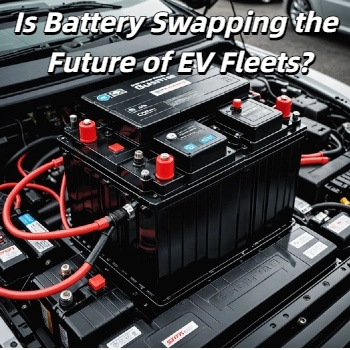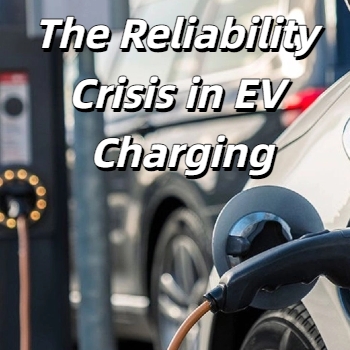Sep 24, 2025
As the number of electric vehicles (EVs) continues to grow rapidly, charging solutions are evolving to meet diverse needs. From traditional slow AC chargers, to today’s widely deployed DC fast chargers, and now to the emerging battery swapping model, the industry is actively exploring faster and more flexible ways to supply energy.
🔋What Is Battery Swapping?
Battery swapping allows an EV to replace its depleted battery with a fully charged one in just a few minutes, instead of waiting to recharge. Using standardized battery packs and automated equipment, the process is almost as fast as refueling a conventional gasoline car.
Compared to charging, battery swapping offers several advantages:
⭐️Ultra-fast energy replenishment: Only a few minutes are needed, making it ideal for high-frequency vehicles.
⭐️Better battery lifecycle management: Centralized charging and maintenance can help extend battery lifespan.
⭐️Cost savings through peak-valley electricity usage: Batteries can be charged during off-peak hours, lowering operating expenses.
🖥️Challenges Facing Battery Swapping
Despite its potential, battery swapping still faces hurdles that limit its large-scale adoption:
⭐️Lack of standardization: Different manufacturers use varying battery specifications, making interoperability difficult.
⭐️High upfront investment: Swap stations require significant space and capital.
⭐️Compatibility and safety requirements: Automated systems must ensure precise, safe, and efficient operations.
This is why, at present, battery swapping is mainly seen as a complement to public fast charging, especially in use cases such as taxis, ride-hailing, logistics fleets, and buses where vehicles operate intensively and on fixed routes.
✅FES Power’s Integrated Solutions
At FES Power, we provide a full spectrum of charging products designed to complement battery swapping scenarios and ensure reliable energy access:
⭐️Portable Chargers (3.5–7kW): Flexible emergency charging for fleet scheduling or roadside needs.
⭐️Wallbox Chargers (7–22kW): Stable daily charging for fleet depots and parking facilities.
⭐️DC Fast Chargers (120–160kW): High-power fast charging to support fleet operations, working in synergy with swapping stations.
⭐️Solar-Storage Ultra-Fast Chargers (150–480kW): Integrated with photovoltaic and energy storage systems to reduce grid costs and balance peak loads.
⭐️Mobile Power Units (46–60kW): On-demand, mobile energy supply for special operations or temporary sites
With this diversified portfolio, FES Power is building a comprehensive ecosystem that combines fast charging, swapping, and energy storage, ensuring that EVs in different scenarios can access energy efficiently, conveniently, and safely.
Conclusion
Battery swapping will not replace fast charging, but it represents an important supplement to the charging ecosystem. As standardization improves and business models mature, it will play an increasingly critical role in fleet applications. FES Power will continue to innovate and provide versatile energy solutions, supporting the global transition to sustainable mobility.please click https://www.fescharging.com/ to learn more.
Read More


